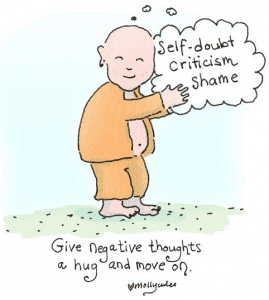
Limiting Beliefs
Limiting Beliefs
Limiting beliefs narrow our view of ourselves. They make us smaller and hold us back, even though that’s not necessary. These thoughts arise from convictions we have developed over time.

Many of these convictions originate in childhood, and we carry them with us for years — often unconsciously — without ever questioning whether they are still true. One of the most pervasive limiting beliefs comes from a familiar conviction, appearing in many variations: “I’m not doing it right” or “I’m not good enough.”
By examining these beliefs and asking yourself, “Is this really true?”, you create space and new possibilities. You free yourself, allowing room for growth instead of restriction.
But how do you actually let go of beliefs and limiting thoughts?
Sometimes you’re not even aware that a limiting belief is operating in the background. This is why it’s important to learn to recognize them. “See them, know them, and watch them go”.
To stop a limiting belief, you have to address it at the root and investigate it. I often use a technique from the Vipassana meditation tradition:
You don’t need to do anything special. Simply find a quiet moment and become aware. Thoughts will arise naturally. When a tho
ught appears, label it from a distance — not “I am thinking,” but “there is thinking.” When a thought shows up that feels worth exploring, stay with it and examine it.
Sometimes it helps to write the thought down along with any feelings or companion-thoughts that arise. By doing this, you unravel the belief layer by layer until you reach the core.

The real art lies in recognizing your limiting beliefs and thought patterns, and then reshaping them into genuinely new auto
matic patterns that support the goals you desire.
This is more challenging than it sounds. A belief that has been embedded in your system for years won’t disappear overnight. But once you start recognizing the limiting thought, you’ve already won more than half the battle.
Give it a try — and don’t be discouraged if it doesn’t work immediately. It requires some effort and practice, but the outcome is deeply healing.
Whenever you find yourself making conclusions in your stream of thoughts, ask the right questions. Consider:
– Is this really true?
– What am I basing this on?
– How do I know for sure?
– What evidence do I have?
– What am I inferring?
– Why is this important?
– What is this really about?
Once you gain clarity, you can begin reshaping limiting beliefs into new conditioned thought patterns. This process is known as neuro-associative conditioning. It means breaking old, unhelpful patterns and integrating new ones step by step into your belief system.
From there, you create a positive affirmation that contradicts the limiting belief.
Examples of Positive Affirmations
Old: I can’t do it.
New: I can do almost anything if I dedicate enough time to it. I believe in myself.
Old: They are better than I am.
New: I stay true to myself, and that is enough. Those who don’t appreciate that can fall away.
Old: I don’t have the talent for that.
New: Anything I can’t do yet, I can learn — and then I can do it.
If a thought keeps bothering you, you can also tell it to stop by saying: “Stop, this is not true!”
If you do this consistently, every time the thought appears, your mind will eventually learn this as the automatic response.
Remember: your world is shaped by how you see it — but what you see is not the roadmap.
An event has no inherent meaning; it only has the meaning you give it.
If you don’t assign it meaning, you don’t feed the limiting beliefs attached to it.
With love,
Margriet


